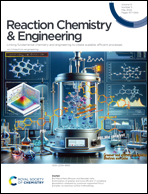Hydrothermal liquefaction of plastics: a survey of the effect of reaction conditions on the reaction efficiency†
Abstract
Plastic waste is a major global issue. Recycling has not made a big impact as hoped; most of the waste is still landfilled or incinerated. Hydrothermal liquefaction (HTL) is a promising technique for plastic recycling. In broad terms, it converts wet carbon-containing feedstocks (e.g., wet biomass or plastics) back into simpler molecules using elevated temperature and pressure. Sub- and supercritical water is used as solvent, reagent, and catalyst, although additional catalysts may be added. HTL efficiency depends on several factors, making optimization potentially complex. We evaluated prior literature on HTL of plastics to summarize the reaction conditions for the optimal results for several types of plastics, such as PE, PP, PET, PS, PC, PVC, and plastic mixtures. Furthermore, the proposed mechanisms were examined and summarized. The polymers with heteroatoms in the main chain, PET and PC, had maximum liquefaction efficiency at subcritical temperatures, separating into their substituent monomers, while those without had maximum liquefaction efficiency at supercritical temperatures. The polyolefins with branches, PS, PP, PVC, and LDPE, liquefied at lower temperatures than that of the branchless HDPE. Plastic and plastic–biomass mixtures showed synergy at subcritical temperatures with maximal yields of around 30%.

- This article is part of the themed collection: Reaction Chemistry & Engineering Recent Review Articles, 2024


 Please wait while we load your content...
Please wait while we load your content...